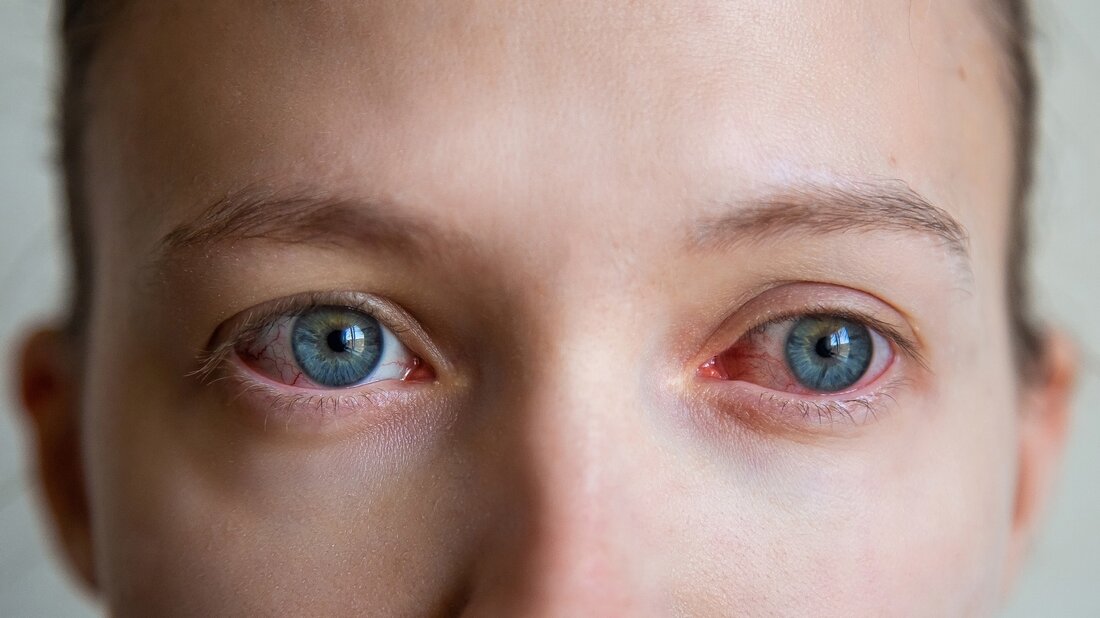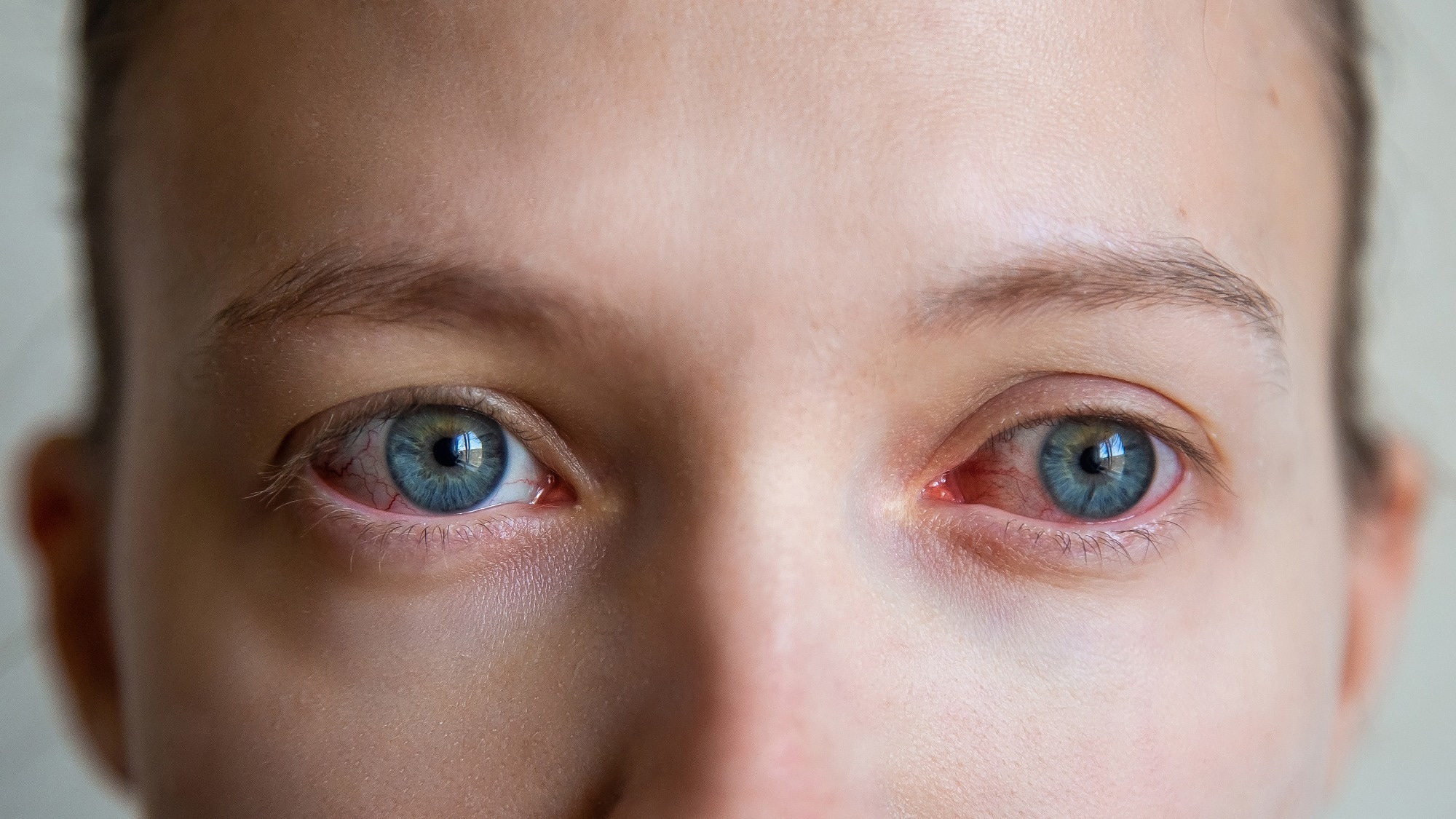What are the complications, preventive measures and treatment options for eye pox?
In the Centers for Disease Control and Prevention (CDC) report published in the Morbidity and Mortality Weekly Report, researchers described five cases of monkeypox that had ocular complications. They discussed treatment and preventative measures for eye pox. Learn: Eyepox - United States, July-September 2022. Photo credit: Zakharova Anastasia/Shutterstock Background The 2022 monkeypox outbreak resulted in over 26,000 cases in the United States. While most skin lesions in these cases disappeared with no or minimal treatment, lesions near vulnerable regions such as the eyes resulted in complications. The monkeypox virus, which generally enters the eye through autoinoculation, can...

What are the complications, preventive measures and treatment options for eye pox?
In the Centers for Disease Control and Prevention (CDC) report published in Morbidity and Mortality Weekly Report Researchers described five cases of monkeypox that had ocular complications. They discussed treatment and preventative measures for eye pox.

Lernen: Augenpocken – Vereinigte Staaten, Juli–September 2022. Bildnachweis: Sacharowa Anastasia/Shutterstock
background
The 2022 monkeypox outbreak resulted in over 26,000 cases in the United States. While most skin lesions in these cases disappeared with no or minimal treatment, lesions near vulnerable regions such as the eyes resulted in complications. The monkeypox virus, which generally enters the eye through autoinoculation, can cause conjunctivitis, keratitis, and even vision loss.
Eyepox is defined as the development of an eye disease in a patient with suspected or confirmed monkeypox disease that cannot be explained by any disease other than monkeypox. The present report describes the symptoms, treatments and outcomes of five patients who developed ocular pox between July and September 2022. Two were infected with human immunodeficiency virus (HIV) and were immunocompromised.
Cases of monkeypox of the eye
Patient A was a 20- to 29-year-old HIV-positive man who was not receiving antiretroviral therapy (ART) and had rashes on his arms, chest, and buttocks suggestive of monkeypox infection. After ten days, he developed itching, pain, discharge, swelling, and sensitivity to light in the left eye. When his ocular symptoms worsened, he was given trifluridine drops in his left eye and tecovirimat intravenously.
Despite improvement and discharge, the patient was readmitted with worsening vision in the left eye and increasing facial lesions. Eye examination revealed keratitis, conjunctivitis, and an ulcer in the conjunctiva. A swab from a conjunctival lesion was positive for orthopoxvirus. Intravenous treatment with tecovirimat and trifluridine drops was resumed. The patient was still hospitalized at the time of reporting and his prognosis was unknown.
Patient B was another HIV-positive man aged between 30 and 39 years who was not receiving ART therapy. He had rashes on the legs, chest, face, and perianal area, with a lesion on the nose near the right eye. Swab tests were positive for orthopoxvirus and he was started on ART and prescribed tecovirimat for two weeks. The worsening facial lesions and spread of the nasal dorsum lesion to his right eye resulted in conjunctivitis in the right eye, nodular and conjunctival lesions, and corneal ulcers. He was given intravenous tecovirimat and trifluridine drops and was discharged after 10 days of improvement.
Patients C and D were previously healthy men between the ages of 30 and 39 years. Patient C came to the hospital with perianal lesions and rectal pain. He developed lesions on his abdomen, penis and wrist. He experienced right eye pain, ocular discharge, redness, and subsequent bilateral conjunctivitis, which doctors attributed to autoinoculation. He was treated with Tecovirimat until all symptoms resolved.
Patient D developed a rash in the groin area, swelling, redness, and pain in the right eye. Ocular symptoms worsened with periorbital swelling, multiple eyelid lesions, conjunctivitis, eyelid margin ulcers, and conjunctival lesions. No visual disturbances were noted. Swab samples from the conjunctival lesions tested positive for orthopoxvirus. The patient was treated with antibacterial agents, trifluridine eye drops, and oral tecovirimat.
The fifth patient (Patient E) was a previously healthy woman between the ages of 30 and 39 years who had vaginal pustular lesions that spread to her buttocks, back, forehead, chin, and left eyelid. Eye examination revealed a bulbar-conjunctival lesion, conjunctivitis of the left eye, and subconjunctival nodules. She was treated with trifluridine eye drops and oral tecovirimat.
Preventive measures
The CDC recommends monkeypox patients practice hand hygiene and avoid touching their eyes or using contact lenses. Doctors are advised to pay attention to eye pox symptoms because the disease can cause vision loss. Monkeypox patients who show signs of eye disease should undergo visual examination and treatment, and health authorities must be informed of the case.
Conclusions
In summary, the present CDC report treated five cases of ocular pox, of which two patients were HIV positive and not receiving ART. One HIV-positive patient experienced vision loss and his prognosis remains unknown. Most cases have been treated with trifluridine eye drops and oral tecovirimat, and adherence to the therapeutic regimen results in significant improvements.
The CDC recommends strict hygiene protocols to prevent autoinoculation, including washing hands and avoiding contact lenses or any contact with the eyes. They advise health care providers to conduct immediate testing if eye pox is suspected and to initiate empirical treatments in the meantime.
Reference:
- Cash-Goldwasser S., Labuda SM, McCormick DW, et al. (2022). Okuläre Affenpocken – USA, Juli–September 2022. Morbidity and Mortality Weekly Report (MMWR). doi: http://dx.doi.org/10.15585/mmwr.mm7142e1 https://www.cdc.gov/mmwr/volumes/71/wr/mm7142e1.htm
.

 Suche
Suche
 Mein Konto
Mein Konto
